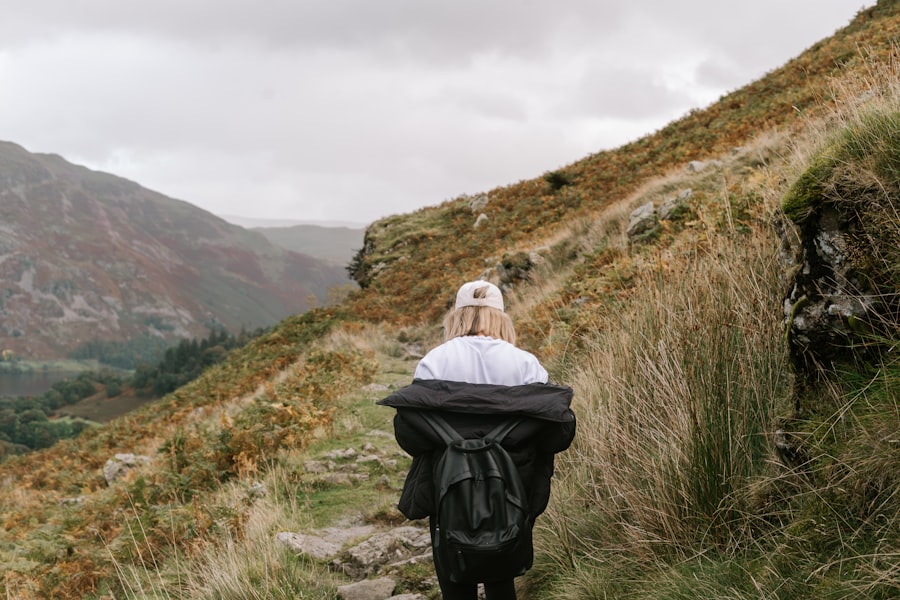Keeping chickens near wellheads has become increasingly popular among individuals pursuing sustainable living and self-sufficiency in food production. However, this practice raises concerns about potential environmental and public health risks. This article examines the following aspects of keeping chickens near wellheads:
1.
Potential risks and concerns
2. Regulations and guidelines
3. Recommended distance between chickens and wellheads
4.
Best practices for managing chickens near wellheads
5. Alternative options for keeping chickens away from wellheads
6. Final considerations for those contemplating chicken-keeping near wellheads
By addressing these topics, readers will gain a comprehensive understanding of the issues surrounding this practice and be better equipped to make informed decisions about keeping chickens in proximity to wellheads.
Table of Contents
- 1 Potential risks and concerns of keeping chickens near wellheads
- 2 Regulations and guidelines for keeping chickens near wellheads
- 3 Recommended distance for keeping chickens from wellheads
- 4 Best practices for managing chickens near wellheads
- 5 Alternative options for keeping chickens away from wellheads
- 6 Conclusion and final considerations for keeping chickens near wellheads
- 7 FAQs
- 7.1 What is the recommended distance to keep chickens from a wellhead?
- 7.2 Why is it important to keep chickens at a safe distance from a wellhead?
- 7.3 What are the potential risks of keeping chickens too close to a wellhead?
- 7.4 Are there any regulations or guidelines regarding the distance between chickens and a wellhead?
- 7.5 What are some best practices for keeping chickens at a safe distance from a wellhead?
Key Takeaways
- Keeping chickens near wellheads can pose potential risks to both the chickens and the surrounding environment.
- Potential risks and concerns include exposure to harmful chemicals, contamination of eggs and meat, and potential health risks to humans.
- Regulations and guidelines for keeping chickens near wellheads vary by location and it is important to be aware of local laws and restrictions.
- It is recommended to keep chickens at a safe distance of at least 100 feet from wellheads to minimize potential risks.
- Best practices for managing chickens near wellheads include regular monitoring of water and soil quality, proper waste management, and seeking professional advice when in doubt.
- Alternative options for keeping chickens away from wellheads include relocating the chicken coop to a safer distance or exploring other locations for chicken keeping.
- In conclusion, keeping chickens near wellheads requires careful consideration of potential risks, adherence to regulations, and implementation of best practices to ensure the safety of the chickens and the surrounding environment.
Potential risks and concerns of keeping chickens near wellheads
Contamination Risk from Wellhead Operations
One of the main concerns of keeping chickens near wellheads is the potential contamination of the chicken and their eggs with harmful substances that may be present in the vicinity of the wellhead. Wellheads are used to extract oil and gas from the ground, and there is a risk of leaks or spills that could contaminate the surrounding soil and water. If chickens come into contact with contaminated soil or water, they may ingest harmful substances that could pose a risk to their health and the health of those consuming their eggs or meat.
Environmental and Health Risks from Chicken Waste
Additionally, there is a concern about the potential impact of chicken waste on the surrounding environment, as it may contain pathogens or pollutants that could contaminate the soil and water near the wellhead. This could pose a risk to the local ecosystem and public health if not managed properly.
Risks to Wellhead Infrastructure and Security
Chickens are known to peck at objects and may cause damage to equipment or infrastructure near the wellhead, which could lead to leaks or spills. Additionally, the presence of chickens near wellheads may attract other wildlife, such as rodents or predators, which could pose a risk to the safety and security of the wellhead and its surrounding area.
Overall, there are several potential risks and concerns associated with keeping chickens near wellheads that must be carefully considered and managed to ensure the safety of the environment and public health.
Regulations and guidelines for keeping chickens near wellheads

In many areas, there are regulations and guidelines in place that govern the keeping of livestock, including chickens, near wellheads. These regulations are designed to protect public health and the environment by ensuring that livestock are kept at a safe distance from potential sources of contamination, such as wellheads. It is important for those considering keeping chickens near wellheads to familiarize themselves with these regulations and guidelines to ensure compliance and minimize potential risks.
Some regulations may specify a minimum distance that chickens must be kept from wellheads to reduce the risk of contamination. Additionally, there may be guidelines for managing chicken waste to prevent pollution of the surrounding soil and water. It is important for those considering keeping chickens near wellheads to research and understand the specific regulations and guidelines that apply to their area, as failure to comply could result in fines or other penalties.
By following these regulations and guidelines, individuals can help to minimize potential risks and ensure the safety of their chickens, as well as the surrounding environment.
Recommended distance for keeping chickens from wellheads
The recommended distance for keeping chickens from wellheads can vary depending on local regulations and guidelines, as well as specific circumstances such as the type of wellhead and potential risks in the area. In general, it is recommended to keep chickens at a distance that minimizes the risk of contamination from potential leaks or spills at the wellhead. This distance may be specified in local regulations or guidelines, or it may need to be determined based on a risk assessment of the specific site.
In some cases, it may be recommended to keep chickens a certain distance from the perimeter of the wellhead, while in other cases it may be more important to consider factors such as prevailing wind direction and topography to determine a safe distance. It is important for those considering keeping chickens near wellheads to consult with local authorities or experts who can provide guidance on determining a safe distance based on specific circumstances. By following recommended distances for keeping chickens from wellheads, individuals can help to minimize potential risks and ensure the safety of their chickens and the surrounding environment.
Best practices for managing chickens near wellheads
There are several best practices that can help to minimize potential risks associated with keeping chickens near wellheads. One important practice is to regularly inspect the wellhead and surrounding area for any signs of leaks or spills that could pose a risk to the chickens or their environment. By promptly addressing any issues that are identified, individuals can help to minimize potential risks and ensure the safety of their chickens.
Another best practice is to carefully manage chicken waste to prevent pollution of the surrounding soil and water. This may involve using appropriate containment measures, such as compost bins or designated areas for waste disposal, to prevent runoff or leaching of contaminants into the environment. Additionally, it is important to provide clean water and feed for the chickens to minimize their contact with potentially contaminated soil or water near the wellhead.
Furthermore, it is important to monitor the health of the chickens regularly and seek veterinary care if any signs of illness are observed. By practicing good animal husbandry and providing a clean and safe environment for the chickens, individuals can help to minimize potential risks associated with keeping chickens near wellheads.
Alternative options for keeping chickens away from wellheads

Locating Chicken Coops at a Safe Distance
For those concerned about potential risks associated with keeping chickens near wellheads, there are alternative options that can allow them to raise chickens while minimizing potential risks. One option is to consider locating chicken coops in areas that are at a safe distance from wellheads, such as on the opposite side of a property or in a separate designated area. By carefully selecting a location for chicken coops that minimizes potential risks, individuals can still enjoy raising chickens while ensuring their safety and minimizing potential impacts on the environment.
Alternative Sources of Food Production
Another alternative option is to consider alternative sources of food production, such as vegetable gardens or fruit trees, that do not pose the same potential risks as raising livestock near wellheads. By diversifying food production activities, individuals can still enjoy sustainable living while minimizing potential risks associated with raising livestock near potential sources of contamination.
Minimizing Risks and Ensuring Sustainability
By exploring these alternative options, individuals can find ways to raise chickens or produce food sustainably while minimizing potential risks to their wellheads and the environment.
Conclusion and final considerations for keeping chickens near wellheads
In conclusion, keeping chickens near wellheads raises several potential risks and concerns that must be carefully considered and managed to ensure public health and environmental safety. It is important for those considering keeping chickens near wellheads to familiarize themselves with regulations and guidelines that apply to their area, as well as recommended distances for keeping chickens from wellheads. By following best practices for managing chickens near wellheads and considering alternative options for food production, individuals can minimize potential risks while still enjoying sustainable living practices.
Ultimately, by carefully considering potential risks and taking appropriate measures to manage them, individuals can raise chickens near wellheads in a way that is safe for both their animals and the surrounding environment.
If you’re considering keeping chickens, you may be wondering how far from the wellhead you should keep them. According to a helpful article on Poultry Wizard, it’s important to consider the distance between your chicken coop and the wellhead to prevent contamination of the water supply. The article provides valuable information on the proper placement of chicken coops in relation to wellheads, ensuring the health and safety of both your chickens and your water source. For more tips on building a suitable chicken coop, check out this article on Poultry Wizard’s website.
FAQs
What is the recommended distance to keep chickens from a wellhead?
The recommended distance to keep chickens from a wellhead is at least 100 feet. This distance helps to minimize the risk of contamination to the well water from chicken waste and other potential pollutants.
Why is it important to keep chickens at a safe distance from a wellhead?
It is important to keep chickens at a safe distance from a wellhead to prevent potential contamination of the well water. Chicken waste and other pollutants can seep into the ground and potentially contaminate the water supply if the chickens are kept too close to the wellhead.
What are the potential risks of keeping chickens too close to a wellhead?
Keeping chickens too close to a wellhead can pose a risk of contaminating the well water with bacteria, parasites, and other harmful substances present in chicken waste. This can lead to health risks for humans and animals consuming the contaminated water.
Are there any regulations or guidelines regarding the distance between chickens and a wellhead?
Regulations and guidelines regarding the distance between chickens and a wellhead may vary depending on local and state regulations. It is important to check with local authorities or environmental agencies to ensure compliance with any specific regulations or guidelines in your area.
What are some best practices for keeping chickens at a safe distance from a wellhead?
Some best practices for keeping chickens at a safe distance from a wellhead include maintaining a distance of at least 100 feet, implementing proper waste management and sanitation practices, and regularly monitoring the well water for any signs of contamination.
Meet Walter, the feathered-friend fanatic of Florida! Nestled in the sunshine state, Walter struts through life with his feathered companions, clucking his way to happiness. With a coop that’s fancier than a five-star hotel, he’s the Don Juan of the chicken world. When he’s not teaching his hens to do the cha-cha, you’ll find him in a heated debate with his prized rooster, Sir Clucks-a-Lot. Walter’s poultry passion is no yolk; he’s the sunny-side-up guy you never knew you needed in your flock of friends!







